Blockchain as well as other emerging technologies like IoT, artificial intelligence and augmented reality has gone beyond its initial financial and cryptocurrency intent. With the features enabling decentralized storage, immutability, transparency and traceability of data, the blockchain technology might provide a sound basis for an ecosystem where users collaborate, exchange data and are incentivised to make good progress by receiving a reward in the form of cryptocurrencies. Education is the industry that is changing before our eyes as it suffers from inefficiency of the traditional system. The blockchain technology is able to overcome these problems by its decentralized nature, smart contract and crypto rewards.
Blockchain is a disruptive technology destined to revamp the global economy in the foreseeable future. The blockchain technology is a peer-to-peer distributed ledger with information being encrypted and stored on subsequent blocks that link up to the previous blocks in a chronological order creating a chain of data.
Blockchain is designed to store information about transactions, agreements between the parties and anything existing in a digital form. As far as records are distributed the blockchain is highly secured and any activities of fraudsters are easily detected and terminated.
Each industry stands to reap significant benefits from implementing blockchain to its business with its real-time payments solutions, ability to eliminate manual processes that reduces costs on data management, decentralized and immutable nature helps to secure sensitive data and a lot more that will evaluate the prowess of your business.
Blockchain is a platform that ensures integrity of data and maintains interaction between network users, take a look at the way it works:
The aforementioned key points pave the way for blockchain technology to disrupt various industries including education. It has the potential to provide easy access to learning materials, credentials and transcripts as well as an innovative way of collaboration.
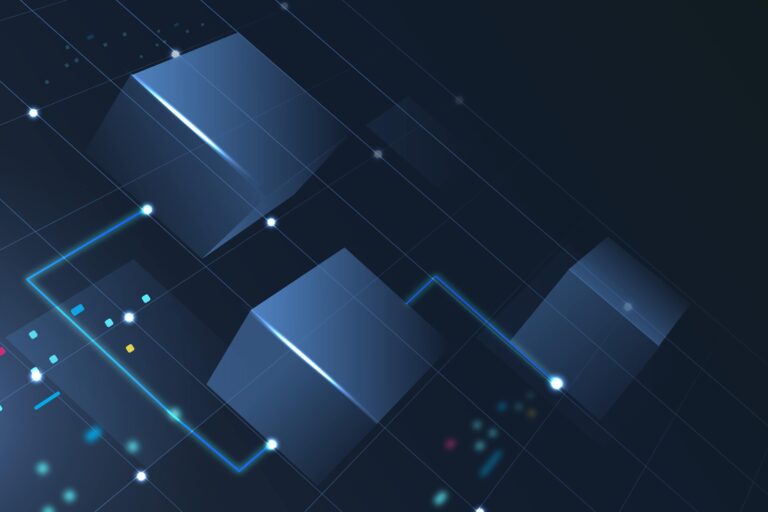
Despite tremendous benefits blockchain offers to the education industry, many schools and higher education institutions are still reluctant to adopt it. This lack of interest in using blockchain is possibly entailed by the challenges related to the technology implementation, including adoption rate, security, scalability and cost.
Adoption rate
People still hold off on technology adoption since they are afraid of the unknown, however blockchain presents enormous opportunities to education providers and is likely to revolutionize the traditional education process.
Security
Although, the security feature of blockchain is its defining characteristic, it doesn’t mean that it is invulnerable. Educational institutions may need to apply more strict security measures like using permissioned networks, or encrypting data on blockchain.
Scalability
Educational institutions benefit manifold with blockchain, because it allows them to store a wealth of information including the data of students and alumni taking the industry to the next level, but it should be mentioned that the more information is stored on the blockchain the more blocks have to be created that requires additional investments.
Cost
Although blockchain integration will lead to savings in the long run, first it requires investment. The implementation of new technology might involve the increase of computing power and changes in the existing infrastructure that costs money. On top of that the staff will likely need to have blockchain training to work properly with the new infrastructure.
Blockchain has the capacity to overcome the challenges that have been dragging the education sector down for years. Below you can find clear-cut solutions.
Enhanced and transparent record-keeping
Due to the immutability of blockchain, student records could be created once and be accessible to all educational institutions as well as employers. Each task, assignment or any extracurricular activity is appended to the student’s digital record that is presented by blocks. Thus all the participants of the educational process have a bird’s eye view of the student’s records. Aside from this, blockchain can contribute to accreditation of schools, colleges and universities, moreover it might put an end to diplome falsification.
Student accountability powered by smart contracts

Smart contracts could be efficiently used by teachers to enter into digital agreements with the students related to accomplishment of tasks. The assignments, instructions and due date are programmed into the contracts and after the task is completed and the necessary prerequisites are satisfied students get credit and completion certificate or get access to the next set of tasks. It promotes a more individualized learning and encourages students to study more diligently.
Incentivizing students and teachers to achieve greater results
Academic institutions can incentivise both students and teachers to make good progress by utilizing cryptocurrency as a reward for their performance. Students receive crypto for any activities connected with the learning process and this reward could be spent on student loans, learning materials or school suppliers. Teachers get rewards for contributing to the educational process.
Learning performance tracking and individualization
Transparency of data storage on blockchain offers educators many resources to monitor student’s performance. Using smart contracts to identify where a student is struggling academic programs might be customized. Student’s performance is available throughout the district and used in helping to improve the whole educational process.
Ultimately, this system could aggregate all students’ performance statistics within a district or even on a national level to create healthy competition between schools, colleges and universities and increase education level.
Introducing verifiable lifetime student transcripts
Many have had difficulty in obtaining a transcript from institutions. Blockchain is empowered to provide the educational system with digital student transcripts that are available at any moment. It contains information about all educational accomplishments, streamlines records verification procedure and simplifies the transition of pupils between schools.
Providing students with an educational achievement portfolio
Blockchain enables students to create their own digital portfolios containing information about all educational achievements such as diplomas, certificates, attendance and other education-related merits. They can share it with universities to prove the worthiness of entering it or send it to an employer to be considered as a candidate. The universal database of potential candidates might be created from which the best would be picked up thus incentivizing students to perform better.
How is blockchain used to keep student records?
Blockchain is designed to reduce the overhead associated with verification procedures so that educators can get acquainted with a person’s digital transcript in just a few clicks. It would bring a lot of benefits to educational institutions and employers, moreover lifelong learning is increasingly vital in today’s rapidly developing world that’s why blockchain-based credentialing will be in demand in the foreseeable future.
Blockchain and a digital student diploma
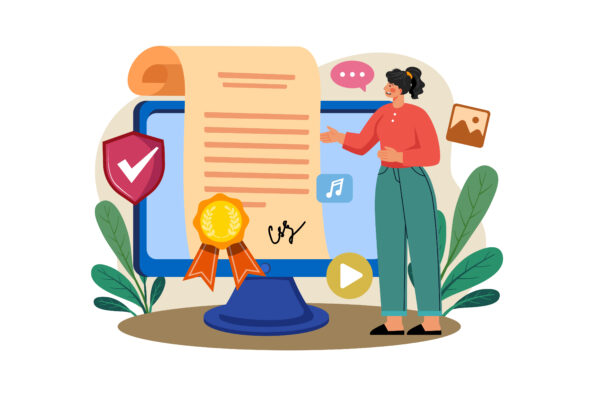
Storing a diploma on blockchain delivers benefits to students, institutions and employers. Students can access their academic credentials anytime they wish without relying on institutions. Educational organizations save time and money on the diploma verification process. The hiring process is streamlined too because employers just need a link to a digital version of diploma rather than applying to the university to certify a paper copy of a candidate.
Using blockchain for university curricula
The impact of blockchain in the education landscape is far beyond that of record keeping and has the potential to transform the university curricula through storing of coursework and digital syllabi. The use of smart contracts gives teachers more time to concentrate on academic endeavors while students proceed with the tasks being verified and graded automatically. Moreover, it contributes to online education enhancing the accreditation process.
Blockchain’s role in lowering education costs
As far as numerous parties are involved in the process of managing tuition fees, the last are quite high that increases the overall student loan debt. Blockchain can reduce the administrative overhead that will lead to lower fees and make education more affordable.
People who are keen on lifelong learning also benefit from blockchain technology since it allows sharing of various teaching and learning materials such as books, videos, podcasts within a private network in a cheap and secure manner.
Blockchain in university research
Professors put a lot of time into doing research to discover something new and pass it to the next generation of students. Unfortunately, the works being published could be posed to outright piracy, and here blockchain comes into play by giving the possibility to monitor how the research is used and track its influence in the field.
Badges
Apart from degrees, a resume contains a wealth of extra information about you that isn’t directly related to your profession like the knowledge of foreign languages, computer program skills or something else that might be useful to an employer.
You can hire a third party to verify the skills and get a badge or a certificate that will be stored on blockchain confirming that you truly possess the skills.
File storage
Using blockchain for data storage is a good option for institutions which want to store a great deal of information like digital curricula, students records and degrees. Since storing data in local hard drives brings the idea of centralization and could be damaged that will result in loss of data and cloud storage don’t come cheap consequently not all the institutions can afford to buy the necessary cloud storage space.
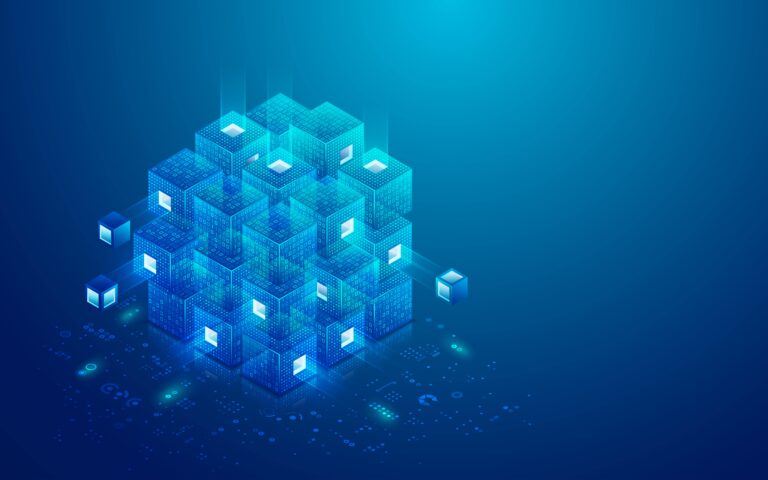
Lessons and courses
Since many blockchains are smart contract-capable the lessons could be executed automatically as the tasks with a thorough instruction are programmed into the blockchain. Each assignment is verified and after all the tasks are completed, the teacher receives crypto payments and students are awarded credits.
Publishing
A great deal of scientific works are done by professors, teachers and students regularly, but having them published is not an easy task, the works are often rejected by scientific journals, although these authors receive the Nobel prize. Blockchain opens up the opportunities for writers to easily publish their works and enter the industry.
People who are keen on lifelong learning also benefit from blockchain technology since it allows sharing of various teaching and learning materials such as books, videos, podcasts within a private network in a cheap and secure manner.
Blockchain in university research
Professors put a lot of time into doing research to discover something new and pass it to the next generation of students. Unfortunately, the works being published could be posed to outright piracy, and here blockchain comes into play by giving the possibility to monitor how the research is used and track int influence in the field.
Below you can see some examples of how the education industry is impacted by blockchain by overhauling the system considered to be obsolete.
Sony Global Education together with IBM decided to create a network infrastructure where numerous institutions can upload individual academic merits of students and other relevant information so that students can easily prove the authenticity of their transcripts or other education-related achievements in case they wish to change the university or move to the next level of education.
Blockcerts. A platform with open-source code where blockchain-based certificates are produced, issued and verified in such a way that any falsification is precluded. All educational achievements could be stored on Blockcerts blockchain to make sure they have never been exposed to changes.
APPII. A platform that verifies the credentials of potential students or teachers through blockchain, machine learning and smart contracts. A user creates a profile, fills out a CV and the system checks its authenticity with further locking of information into its blockchain.
Disciplina. A platform that unifies academic achievements of students and assigns a score based on the skill set students possess. Universities are able to devise an individual study plan from the perspective of students’ performance. By the way, the app provides an opportunity for students to trace their study history, teachers profiles and available courses.
BitDegree. A technology-oriented online platform offering free and paid courses in the field of blockchain, cryptocurrencies and gamified coding in order to introduce the DLT to more people and give a chance to jumpstart a career in blockchain. Tokenized grants are given for successfully completing the course or other merits thus incentivizing students to learn.
Parchment. A platform provides digital credential services for students, educators and employers. K-12 teachers upload any progress in the learning process while higher education institutions process applications, revise academic achievements and create immutable diplomas. More so, students have a 24/7 access to the records stored on blockchain and can effortlessly share them with prospective employers.
Blockchain education network (BEN) is a group of students or alumni scattered around the globe who contribute to the blockchain and cryptocurrency development. Launched by students at MIT and University of Michigan, now the network estimates 4,000 members sharing ideas, building prototypes and designing solutions.
Odem.io. A decentralized marketplace where both students and educators can find education products or courses. For example, with the help of smart contracts students and professors agree on some courses to be taken that will bolster their professional expertise. ODEM recognizes every course a student has completed and an educator has taught that enhances their reputation on the marketplace.
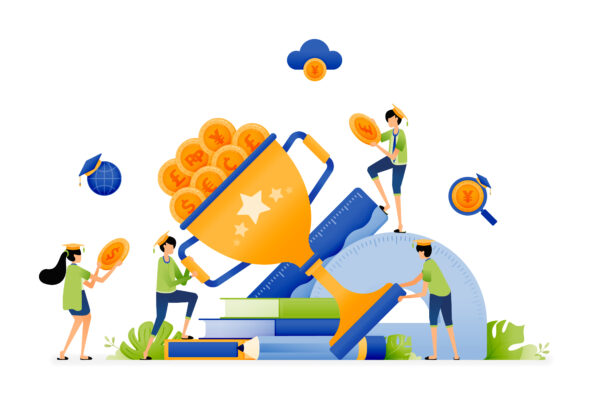
We all know how captivating the games might be for young and old people, for that reason gamification is popular in various areas and the education sector is not an exception. It is utilized to incentivize students and boost their productivity that is achieved by progress rewarding and turning hard stuff into an exciting one. The progress in learning could be measured and a student is rewarded according to his achievements. More so, teachers are incentivized to track the performance of students that might have a positive impact on the whole curriculum. The rewards might be artificial but if tokenized they become much more appealing. Gamification in learning includes game-based elements such as scoring, teamwork, competition among classmates, and etc. It might be implemented at school as well as in courses or some self-teaching apps meaning that gamification doesn’t end at school.
Non-fungible token, better known as NFT, is an indisputable digital certificate to prove the ownership. Since it’s destined for bestowing originality and value to a particular digital asset, NFT bolsters the development of the education industry.
NFTs can substitute for diplomas, certificates, credentials and resumes presenting a monetary value. Digital textbooks might be in the form of NFTs and can be resold with royalty receiving for every further resale. NFTs may also be used as a reward for high-quality work recognition instead of some small stickers that a teacher is used to give to small children.
One more key feature is that students need to be or have a character in order to participate and interact in the virtual world, like Metaverse and these unique characters represent one’s identity. More so, you have an opportunity to make use of different tools because an NFT is like a key or entrance ticket to multiple virtual-spaced worlds.
High-stake exams still remain a cornerstone in students’ assessment as they don’t always reveal real competencies of a student. With NFTs, the whole educational process is captured and stored showing real student’s learning experience and performance. It gives a more clear picture over a student’s academic achievements rather than the exam to which one can memorize the material without a solid understanding of a subject just for the sake of a grade.
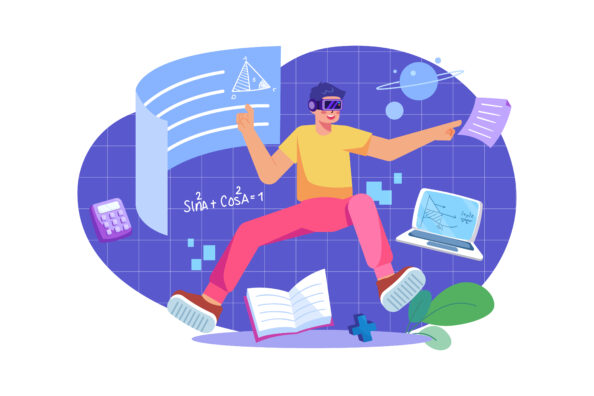
Metaverse in the educational landscape is gaining traction right now. Will it have a significant impact on the future or is it just a space for speculative investors?
Metaverse is a 3D virtual world where participants build their own environments and interact virtually with each other from any location using VR headset or a web browser to connect.
Since the pandemic, online learning has become a new reality. Although there are a vast number of tools that have contributed to online learning, it still lacks social interaction.
Blockchain-powered metaverse is destined to solve this issue enabling students to attend classes virtually and connect with their peers. Teachers can create an environment that is the real life context of the subject students learn. For example, on Geography lesson you might learn about the first round-the-world journey of Ferdinand Magellan by sailing the ship rather than just reading about it in the books or learning a novel entering the scenes as they unfold. The AR (Augmented reality) enables us to experience something that was previously unimaginable and the concept of “What is classroom” is overhauled. You can attend physical lessons and have face-to-face communication with the mates or do the same, but virtually. So, you may choose an option that appeals to you.
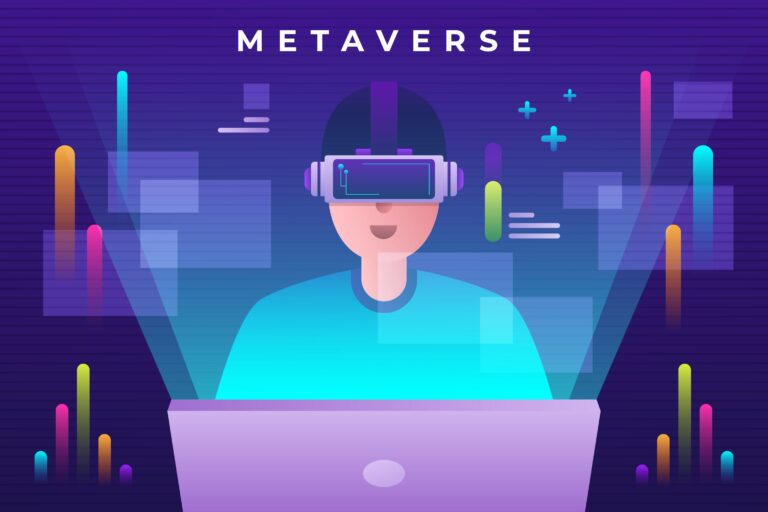
Role of Blockchain in the Future of Education
The use of blockchain in the educational sector allows teachers to openly share the content without exposing it to piracy and track its re-use in order to control in what way a material is used. Students and alumni can have access to their credentials at any time without relying on educational institutions giving them complete ownership over their academic identity.
Blockchain can make great strides in student tuition fees management in which multiple parties – students, parents, loan companies, institutions are involved representing a labor-intensive process. The technology has the capacity to lower tuition fees through automatization and elimination of human interaction. Students, educators and employers benefit a lot from digital diplomas because of immutability and utmost security associated with blockchain.
Moreover, blockchain can reduce the workload of educators by self-executable smart contracts in which certain instructions are programmed. The technology also provides secure storage capabilities for tutorial materials.
Conclusion
The introduction of blockchain technology to the educational sector might structurally change the way of learning by providing flexibility of curricula that promotes growth amongst students. More so, it could create an academic environment that meets the demands of 21st century through metaverse and advancements in AR/VR technologies.
So, with increasing awareness of blockchain’s positive impact on education, the time when institutions will adopt blockchain on a global scale is not far off.
Our dedicated team of blockchain developers, researchers and analysts will help you to implement blockchain innovations into your educational institution, contact our blockchain experts https://ndlabs.dev/blockchain or reach our consulting team to examine your working processes and suggest the right solution tailored to your needs https://ndlabs.dev/blockchain-consulting.